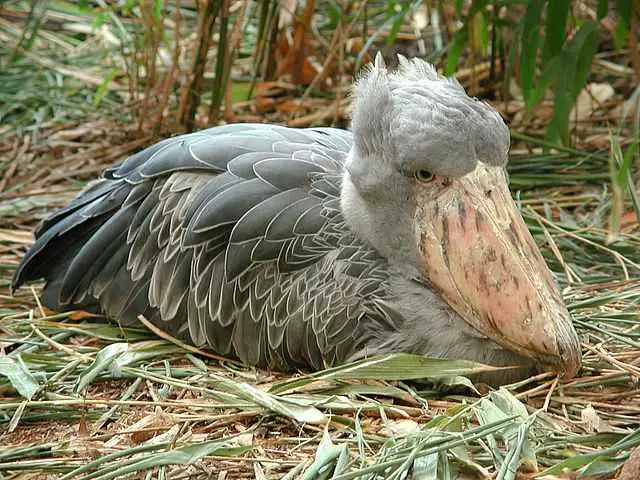Are shoebills native to Africa?
Did they migrate to Africa from somewhere else?
Where do shoebills live?
The shoebill, or Balaeniceps rex, is native to Africa. They did not come from elsewhere, and in fact they cannot be found in the wild elsewhere in the world, either. Shoebills that live outside of Africa can only be found in zoos around the world.

To the shoebill Africa is home, but these birds cannot be found across the whole continent, either. Since they are a vulnerable species and since they require specific habitat conditions to survive and thrive, they can only be found in certain parts of Africa.
These parts of the continent have the right combination of habitat conditions needed for the shoebill, including climate, nearby food sources, water, and more.
Read through the information below to find out more about the shoebill’s habitat, where it can be found, and what it requires to live a healthy life.
Shoebill Habitat:
What parts of the world have shoebills?
Just because shoebills are found in Africa, that doesn’t mean they are happy just anywhere on the continent. In fact, these Balaeniceps birds mostly live in eastern Africa, with some groups finding their way more towards the central areas. They are most commonly found in areas where lungfish are present, since they like to eat these fish. The shoebill is also often found near wild papyrus, as they like to live on and around this plant. The shoebill bird Congo habitat is one of the locations where these birds can be found, but there are many more, including the following:
- Rwanda
- Uganda
- The Congo
- Tanzania
- Zambia
These habitats can usually be located in the eastern parts of Rwanda, northeastern Zambia near the Bangweulu swampland, the northern part of Uganda where wetlands are present, and western Tanzania. The swamp known as the White Nile Sudd in southern Sudan may also be home to some shoebills.
What are the characteristics of a shoebill’s habitat?
The shoebill habitat is fairly specific, and these birds cannot thrive without all of their needs being met. This is one of the reasons why they can only be found in certain parts of Africa. As you can probably see from the list of locations above, the shoebill likes living in swamps and can usually be found in swampy regions. Here are some of the other characteristics of this bird’s habitat:
- Marshes. The bigger the marsh, the better. Shoebills like living in places with a lot of vegetation, and if the vegetation is undisturbed then they’re even more likely to want to nest there. Big marshes with a lot of plant life and plenty of lungfish for the birds to feast on can provide an excellent habitat for this vulnerable species. However, they must be on the lookout for predators lurking in the water here, such as crocodiles. Marshes like this can also be found in and around the wetlands of Africa.
- Freshwater swamps. Swamps are slightly different from marshes, although not much. However, the water in some swamps may be very deep, which isn’t always ideal for a shoebill. If they must live in a place with deeper water, these birds prefer to nest on thick plant life floating on the water’s surface. This makes them a little bit less susceptible to attacks from below and gives them a comfortable, safer place to lay their eggs and make their nests as well. Shoebills cannot live in salty or very brackish water swamps or marshes.
- Poorly oxygenated water. This may sound counter-productive, but in actuality, it’s important for a shoebill to live in a place where the water doesn’t have a lot of oxygen. This is because, when there isn’t as much oxygen in the water, fish are required to come to the surface for a breath more often. When this happens, shoebills strike, hoping to grab a meal or a quick bite. They are much more likely to find food in places where fish are frequently at the water’s surface, so they tend to take up residence in these areas with good results.
Home Is Where The Shoebill Habitat Is…
The shoebill requires specific conditions to be met in order for its habitat to be a safe and healthy one. Unfortunately many shoebill habitats throughout Africa are being destroyed for a variety of reasons. Some are suffering pollution, while others are being dug up or cut down. At the same time, the existing shoebills are being hunted, so their numbers are dwindling as well.
This is why shoebill conservation is important. These birds are already classified as vulnerable, and they may become endangered if something isn’t done to help protect the shoebills that are still in existence. It is important for these birds to have the right kind of habitat and to not run out of space due to human interference.
